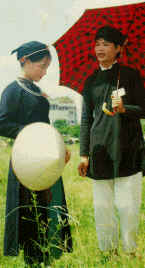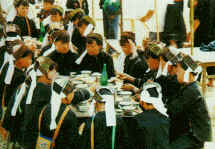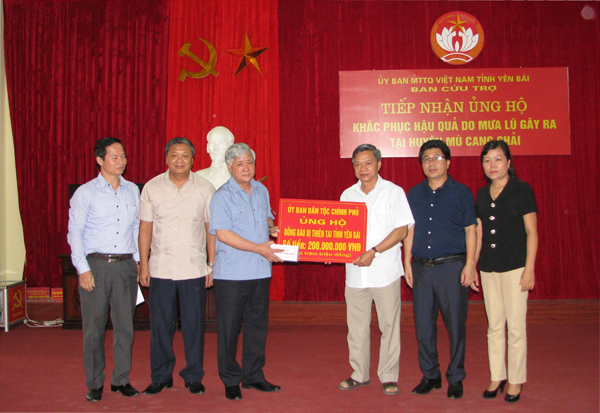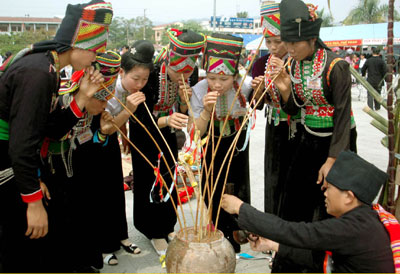The Nung have about 706,000 inhabitants living in the provinces of Lang Son, Cao Bang, Bac Thai, Ha Bac and Tuyen Quang. They have other names such as Xuong, Giang, Nung An, Nung Coi, Phan Sinh, Nung Chao, Nung lnh, Qui Rin, Nung Din and Khen Lai.
Nung language is close to that of the Tay and belongs to the Tay-Thai Group. Nung has writings called Nom Nung (Nung demonic scripts) which has prevailed since the 17th century.
The Nung mainly worship their ancestors. The altar is placed in a bay of the house and above it hungs the altar to deities, genies, saints. Confucian and Kwan Yin.
The Nung live on rice and corn. They cultivate rice either in submerged fields along the ravines and in terraced fields on the hillsides. They grow cash crops and fruit trees such as tangerines and persimmons. Anise is the most valuable trees of the Nung which has brought them high profit every year. Handicrafts are a continuing activity, particularly weaving cloth to supply local needs, then come carpentry, blacksmithing, basketry and ceramicware-making
The Nung villages are often set up on the hillsides, in front of them are the submerged fields and behind are burnt- over land and gardens. The Nung houses are built on stilts. made by wood structure and the roof is covered with tiles or thatch.
The Nung wear indigo attire. Deeply in the Vietnamese people's memory, President Ho Chi Minh often wore indigo vest of Nung style to keep him warm in the cold days when he lived in Pac Bo cave in 1941 to be active in national revolution. after he turned back from abroad. In certain regions, ancient stories retrace about indigo colour and a faithful love of a woman who persistently waits for her husband back from the battle- field. The Nung consider indigo a symbol of loyalty. The Nung prefer fried dishes with pig fat. A unique and luxurious dish of the Nung is khau nhuc. Cross-drink became a long-standing custom of the Nung.
The Nung preserve an abundant treasury of folk arts and culture including folksongs, alternative songs (sli). Smooth melodies of sli in harmony with natural sound of the forests and mountains are deeply impressive to those who once came to Nung region. Then is a folksong combined by elements: verses, music, decoration and performance style.
Lung tung (going to the fields) ceremony is very well-known and attractive to people of all ages. It is always organized on the first month of the lunar year.






